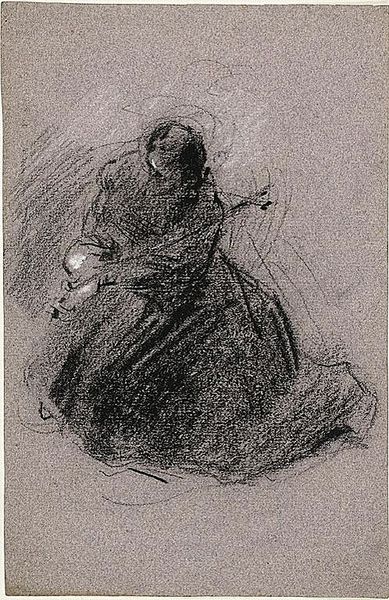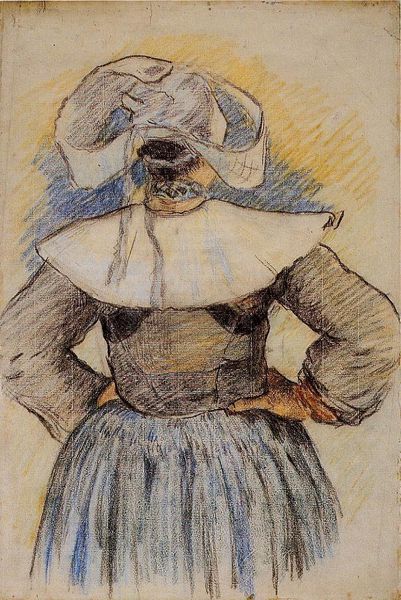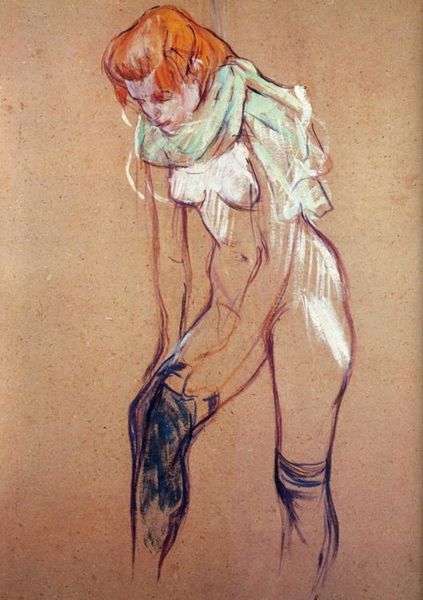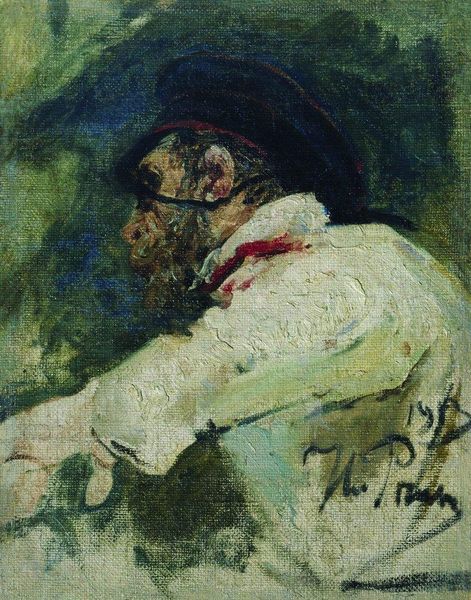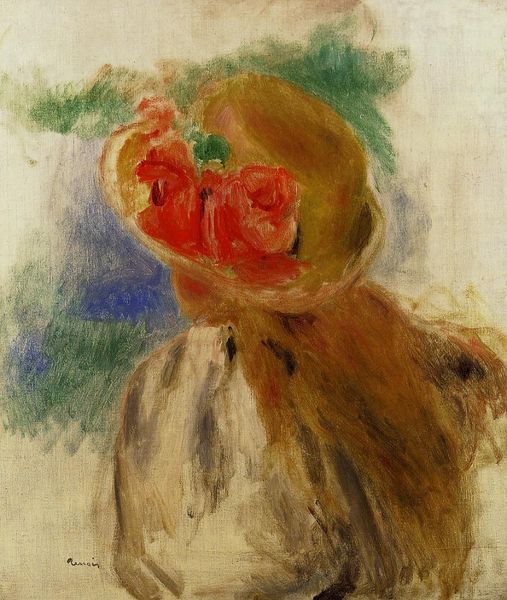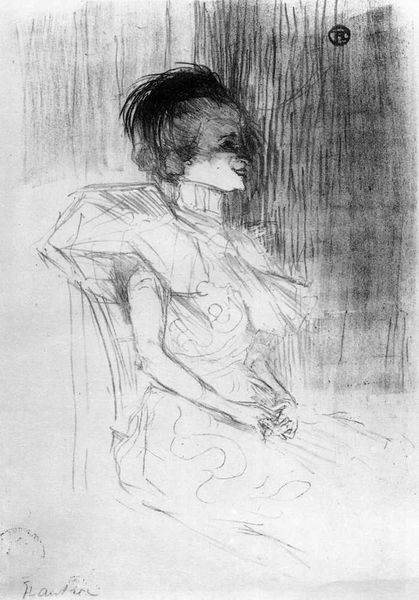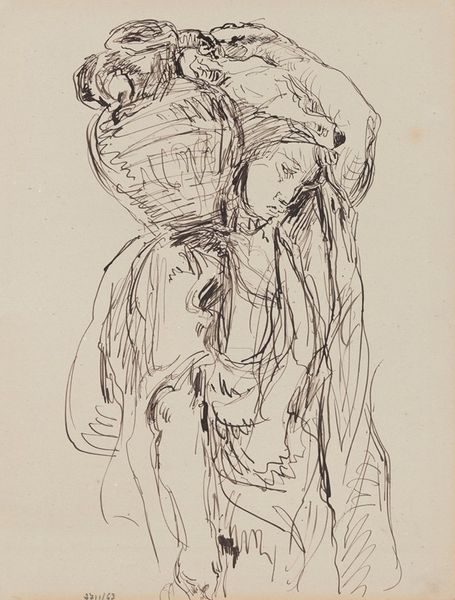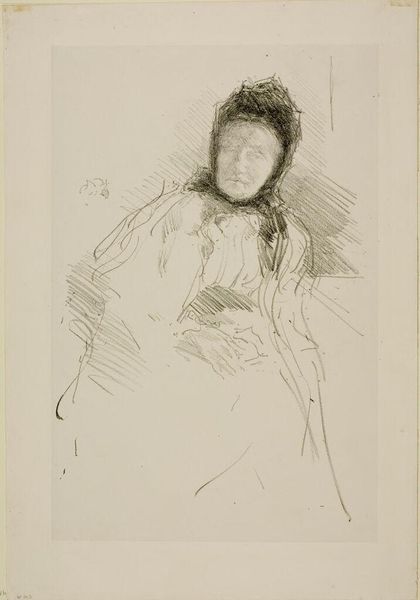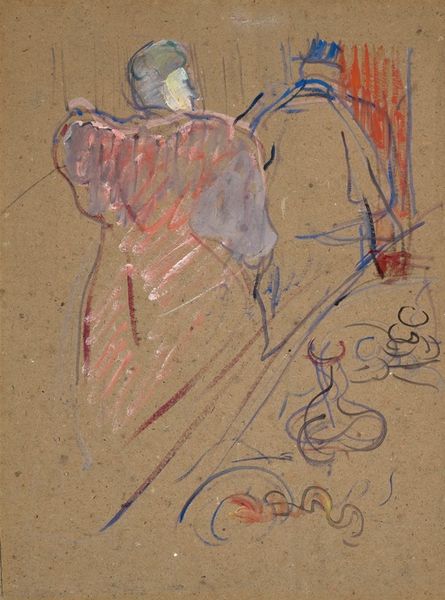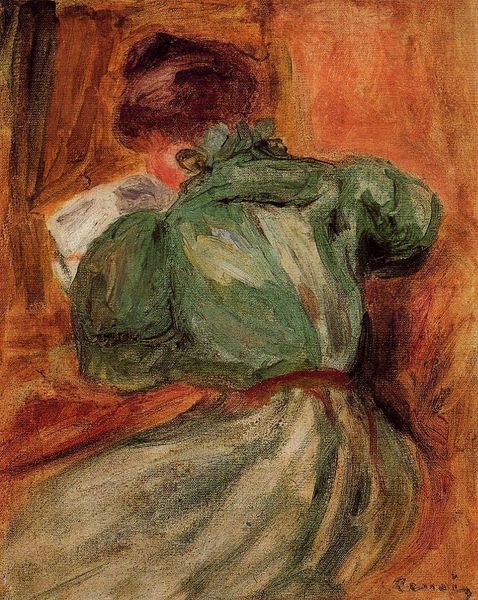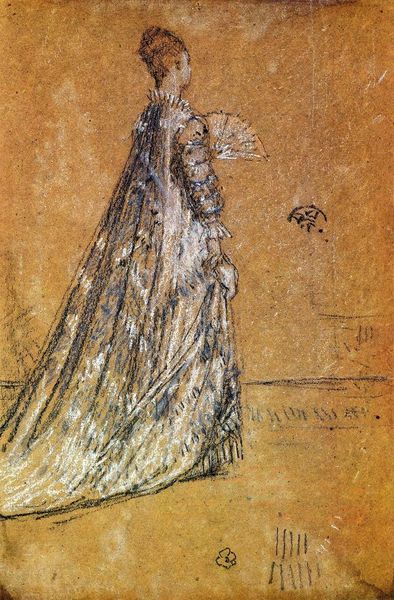
Red Haired Woman Seen from Behind 1891
0:00
0:00
henridetoulouselautrec
Musee Toulouse-Lautrec, Albi, France
Copyright: Public domain
Curator: Look at this study of a woman from behind. Henri de Toulouse-Lautrec created "Red Haired Woman Seen from Behind" using pastel and colored pencil on cardboard around 1891. What strikes you first about this portrait? Editor: It’s haunting, a study in alienation. The woman's back is turned, isolating her, and the rapid lines and muted color palette suggest a life worn down. Who do you imagine she might be? Curator: I'm interested in Lautrec's choices. The sketch-like quality makes it feel immediate, capturing a fleeting moment. What does that raw quality tell us about Lautrec's methods? I find his handling of pastel quite masterful here. Editor: It reminds me of the many working-class women Lautrec depicted in the dance halls and brothels of Montmartre. The gaze is averted, which speaks to a wider societal tendency to dismiss women’s desires or make them only accessible via objectification and class structures. She’s anonymous, perhaps voiceless. Curator: That reading absolutely holds weight. We see Lautrec capturing women within a very particular circuit of labor and leisure in fin-de-siecle Paris. And his own class position obviously informs his vision. Her costume, too, it speaks of her work. Editor: Yes! Her clothes position her – that fluffy fur collar – is it aspirational? Perhaps a mimicry of the bourgeoisie meant to imply a level of respectability otherwise denied to her? It’s a fragile masquerade, no? Curator: And yet, it is only through this attention to surface, texture, line, and material that a likeness, however fleeting, is rendered. Look at the way the lines vibrate around her form—as if she were a negative charge contained by the brown paper—the image almost repels. Editor: It’s a fascinating depiction – a collision of vulnerability and societal restraint. Curator: The effect achieved through rather humble materials. So often when we think of 'high art,' we forget that its meaning is forged from these encounters between material and body, line and labor. Editor: Yes, thinking about the subject’s place within structures of power alongside these choices the artist made helps us deepen our experience. I see how Lautrec both frames and perhaps traps her, offering a complex perspective. Curator: Right—both the subject and the art materials offer us unique insights into this intersection between making and meaning. Editor: A provocative and sad rendering all around, ultimately urging us to confront our assumptions.
Comments
No comments
Be the first to comment and join the conversation on the ultimate creative platform.
